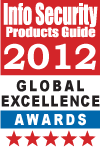CNET…
On iPhone, beware of that AT&T Wi-Fi hot spot
CNET reports, any wireless network can mask itself as an AT&T Wi-Fi hot spot, drawing iPhone users to a potentially dangerous connection. Samy Kamkar, best known for building a worm in 2005 that collected a million overnight friends on MySpace, revealed this unsettling news about Wi-Fi this week. iPhone users protect themselves by disabling their Wi-Fi or disabling the phone’s ability to automatically join AT&T’s Wi-Fi network. Questions remain, however, whether this is an iPhone-specific vulnerability or if any AT&T Wi-fi handset is at risk.
WSJ…
Symantec Pays $370 Million for Two Security Firms
Antivirus provider Symantec plans to purchase two privately held email-and-data encryption companies to buoy its position in the encryption technology market, reports the Wall Street Journal. Symantec will buy PGP Corp and GuardianEdge in deals that total nearly $400 million. The deals point to the growing demand for encryption services for major technology companies.
CBS News…
Announce A Data Breach And Say It’s No Big Deal?
Evan Schuman tackles data breach etiquette in a column for CBSnews.com. He warns retailers against taking the “it’s not as bad as look approach” when cyber criminals have hacked into their systems, stealing sensitive customer data. Schuman points a finger to last week’s security breach by Blippy, a shopping social networking site that stores credit card numbers so users can share shopping habits.





